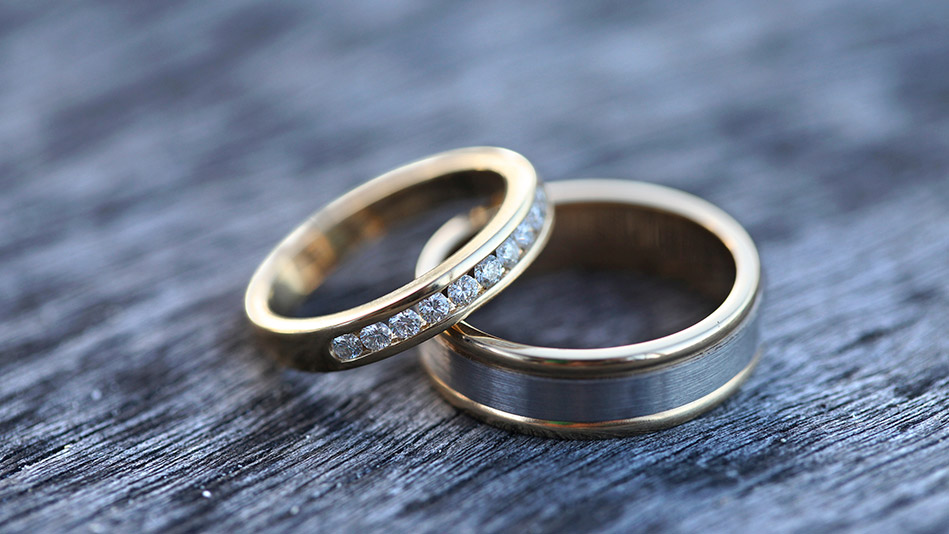Two summers ago, I went on a first date. Expectations for said date were low; we matched on Tinder. I was unsettled, just beginning to write my book, with little free time; he was a medical student, similarly unsettled, similarly little free time. But as I approached the beer garden and saw him, I realized I was already in an electric free fall.
The sparks kept building. He gave thoughtful answers to simple questions, toed the line between openness and mystery, and slid his fingers into mine to take me for a walk after our date crept into its fifth hour. We walked the empty streets under blinking stop lights. At midnight, he gently pressed me up against the window of a restaurant and kissed me—an unexpected, silence-inducing, stomach-jerking kiss.

I sent my best friend a barrage of texts after he walked me home. “It’s just nice to know chemistry like that exists in the world,” I told her, playing it cool. Internally, though, I was anything but. I struggled to focus on work the next day, and then the day after, wondering when he might ask me out again. He was never fully responsive, always busier than anticipated. But the sparks still grew with each date, as tension rose and I felt shaky.
A few weeks in, I discovered he wouldn’t be here for long; he was completing a summer internship and set to leave as the heat faded into fall weather. But I never forgot how I felt toward after first meeting him. The electricity of that connection stayed active in my mind, even after I’d stopped my free fall and landed firmly on the ground.
Attachment theory and love
When I was researching my book on dating, I read a lot of the science on romantic relationships, knowing that even silent principles may influence interactions in significant ways. One of my favorite knowledge sets was attachment theory, originally developed in the 1950s and 1960s. The theory posits that the bonds we form with our closest caretakers will also influence our adult romantic relationships.
Each of us has one of four attachment styles, based on how we were raised. “Secure” infants have caretakers who are responsive to their needs; they feel comfort and safety and explore the world without fear. “Avoidant” children have uncaring caregivers, so they adapt to be highly independent and self-sufficient. “Anxious” children are clingy and preoccupied with their caretaker, because the caretaker is inconsistent when responding to them. “Fearful” attachment was later identified as a hybrid between the two styles, acting dismissive but feeling anxious. (To find your attachment style, I recommend taking this research-based quiz.)
In romantic relationships, you see similar dynamics play out between partners with unique attachment styles. Secures are sort of like the O blood type of attachment; they have the ability to respond to all styles, whether that’s giving someone more reassurance (anxious) or more space (avoidant). Avoidants don’t typically date other avoidants, because they don’t have the glue to hold a relationship together. Anxious types don’t typically vibe with each other either, because they can’t easily anticipate or meet each other’s needs.
Since I am anxious, I have seemingly always been drawn to avoidants—a classic coupling in attachment theory. At first, they seem to be like two puzzle pieces. The avoidant wants to remain in control and feel needed by their partner, and the anxious wants to feel loved and cared for. The problem occurs when an anxious type requires more intimacy than the avoidant can comfortably provide. These two wind up in a toxic rollercoaster relationship. There’s a lot of allure and sparks, but not a lot of long-term payoff.
 In romantic relationships, you see similar dynamics play out between partners with unique attachment styles. Secures are sort of like the O blood type of attachment; they have the ability to respond to all styles, whether that’s giving someone more reassurance (anxious) or more space (avoidant). Avoidants don’t typically date other avoidants, because they don’t have the glue to hold a relationship together. Anxious types don’t typically vibe with each other either, because they can’t easily anticipate or meet each other’s needs.
In romantic relationships, you see similar dynamics play out between partners with unique attachment styles. Secures are sort of like the O blood type of attachment; they have the ability to respond to all styles, whether that’s giving someone more reassurance (anxious) or more space (avoidant). Avoidants don’t typically date other avoidants, because they don’t have the glue to hold a relationship together. Anxious types don’t typically vibe with each other either, because they can’t easily anticipate or meet each other’s needs.
Since I am anxious, I have seemingly always been drawn to avoidants—a classic coupling in attachment theory. At first, they seem to be like two puzzle pieces. The avoidant wants to remain in control and feel needed by their partner, and the anxious wants to feel loved and cared for. The problem occurs when an anxious type requires more intimacy than the avoidant can comfortably provide. These two wind up in a toxic rollercoaster relationship. There’s a lot of allure and sparks, but not a lot of long-term payoff.
As an anxious attacher, I should be looking for a secure. The only problem? I didn’t think I’d ever felt chemistry with a truly secure attacher before. However, when I started to understand attachment theory, I was committed to at least trying to date someone secure.
Dating the right attachment type
Weirdly enough, there was another narrative running alongside my spark-filled first date that went nowhere. While I was waiting on texts from the medical student, I met a friend of my mutual friends. This meeting barely registered with me, as I was blinded by that other flashy spark. We messaged back and forth occasionally on Facebook, and he’d come into town every so often. But other than that, I knew next to nothing about him—until a friend told me he’d dated her roommate and did thoughtful things for her that went under-appreciated.
 These stories were not meant to incite my romantic interest, but they did. In a tech-based dating culture where people simply don’t put in the effort, it was refreshing to hear about someone who actually tried to maintain a relationship. According to attachment theory, he would have been an obvious secure. So I filed these stories away and mulled them over privately.
These stories were not meant to incite my romantic interest, but they did. In a tech-based dating culture where people simply don’t put in the effort, it was refreshing to hear about someone who actually tried to maintain a relationship. According to attachment theory, he would have been an obvious secure. So I filed these stories away and mulled them over privately.
A couple of months later, while my friends were discussing our mutual romantic woes, I realized my latent crush on this guy. At a going-away party he was in town for the next July, I confirmed there might be something romantic there. At his birthday party in November, which I crashed, our relationship began.
It was the first healthy one I’d ever had. When emotions were voiced, they were validated. When needs were expressed, he’d try to meet them. When I asked for something, he’d listen and do his best. In return, I tried my best to do the same. Unfortunately, the relationship didn’t last. It ended with no hard feelings—and a great model for me to use to build future relationships.
Forgoing sparks for true chemistry
In reality, a calm attachment system is the foundation of a strong relationship. Despite what movies and pop culture teach us, excitement, confusion, and hot-and-cold behaviors are not prerequisites for love. “The spark” is but a figment of an insecure attachment style.
I do not desire the roller-coaster emotion I had with my exes—the electricity of excitement, fear, confusion, lust and mostly friction produced when an anxious dates an avoidant. We didn’t jibe, according to adult attachment theory, and that led to repeated periods of distance and reconciliation. Each day might have been a new adventure with an avoidant, but not one I wanted to go on as someone prone to anxiety.
I finally concluded that there’s a difference between sparks and real chemistry. Sparks are fun, but chemistry is something else: It’s easy, it’s accepting, it’s affirming, it’s passion and excitement devoid of the ups and downs of the relationships we’re conditioned to idolize. And it often lasts in reality, as opposed to fleeting memories of my spark-filled flings.

